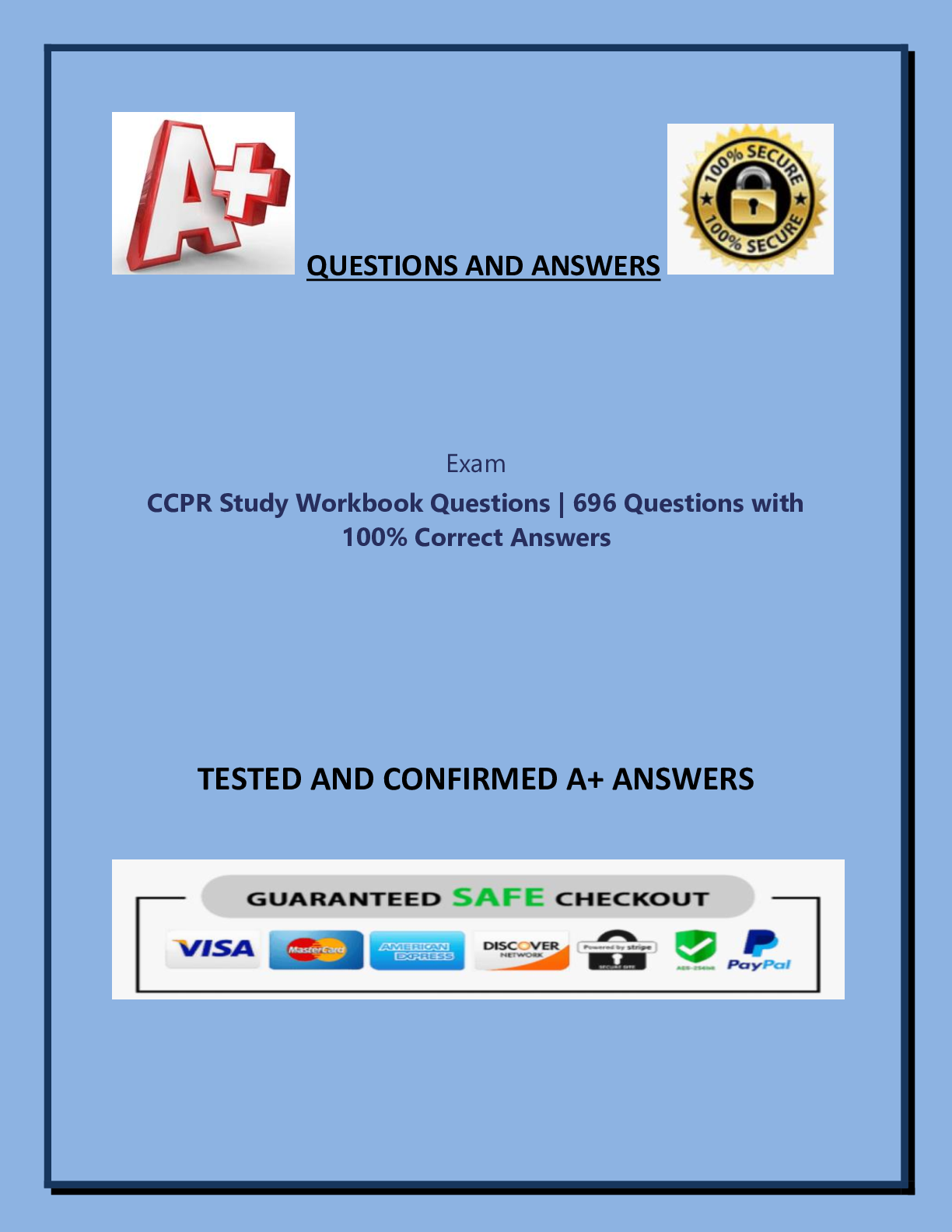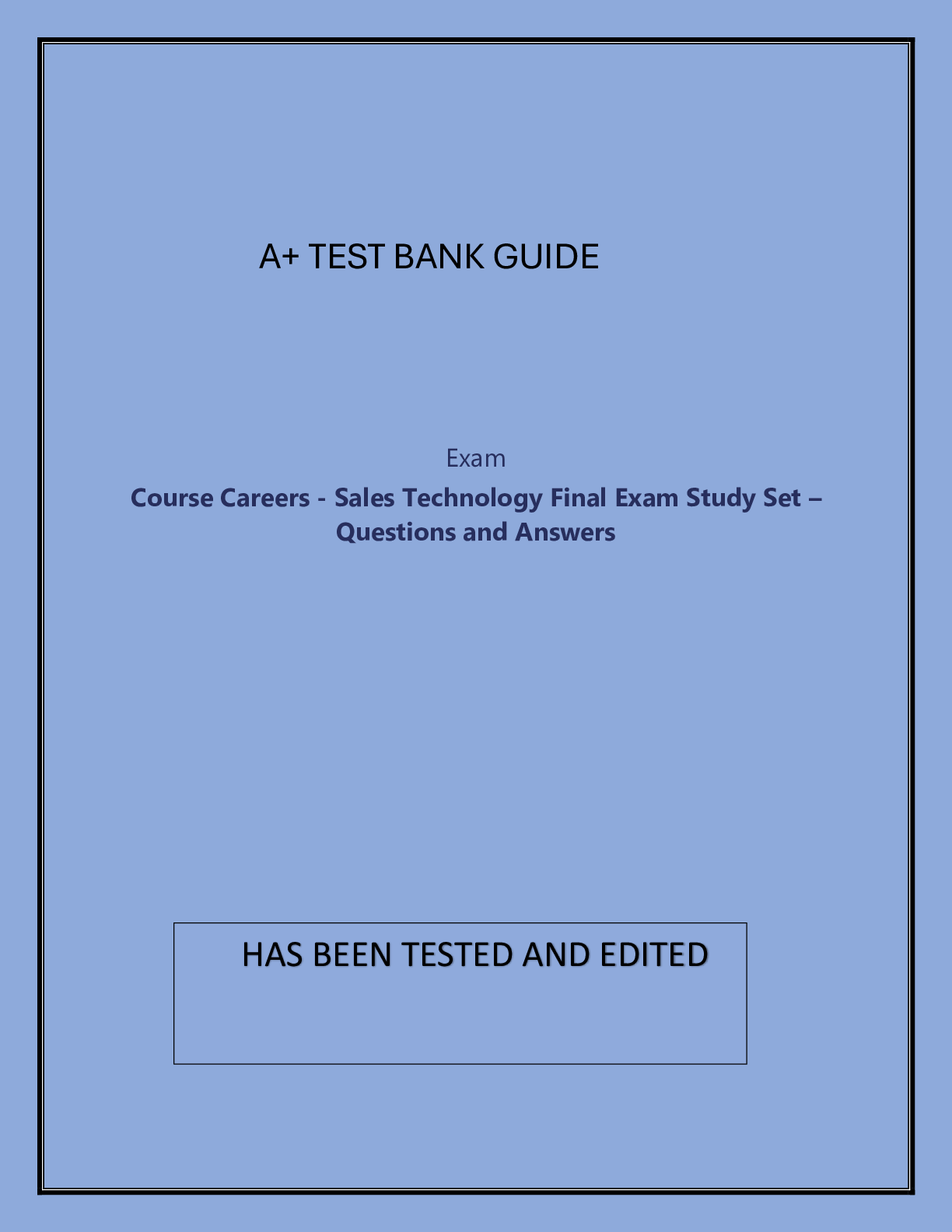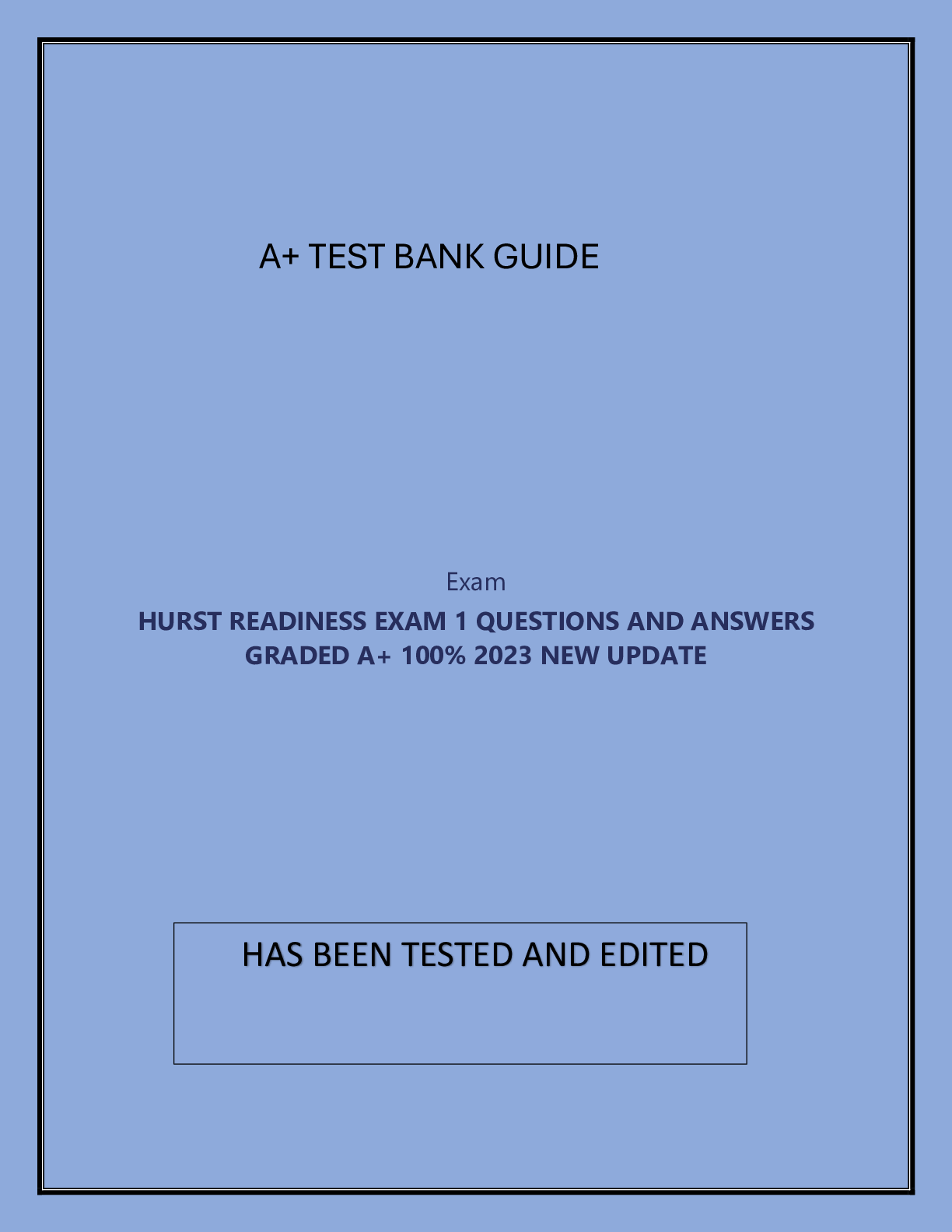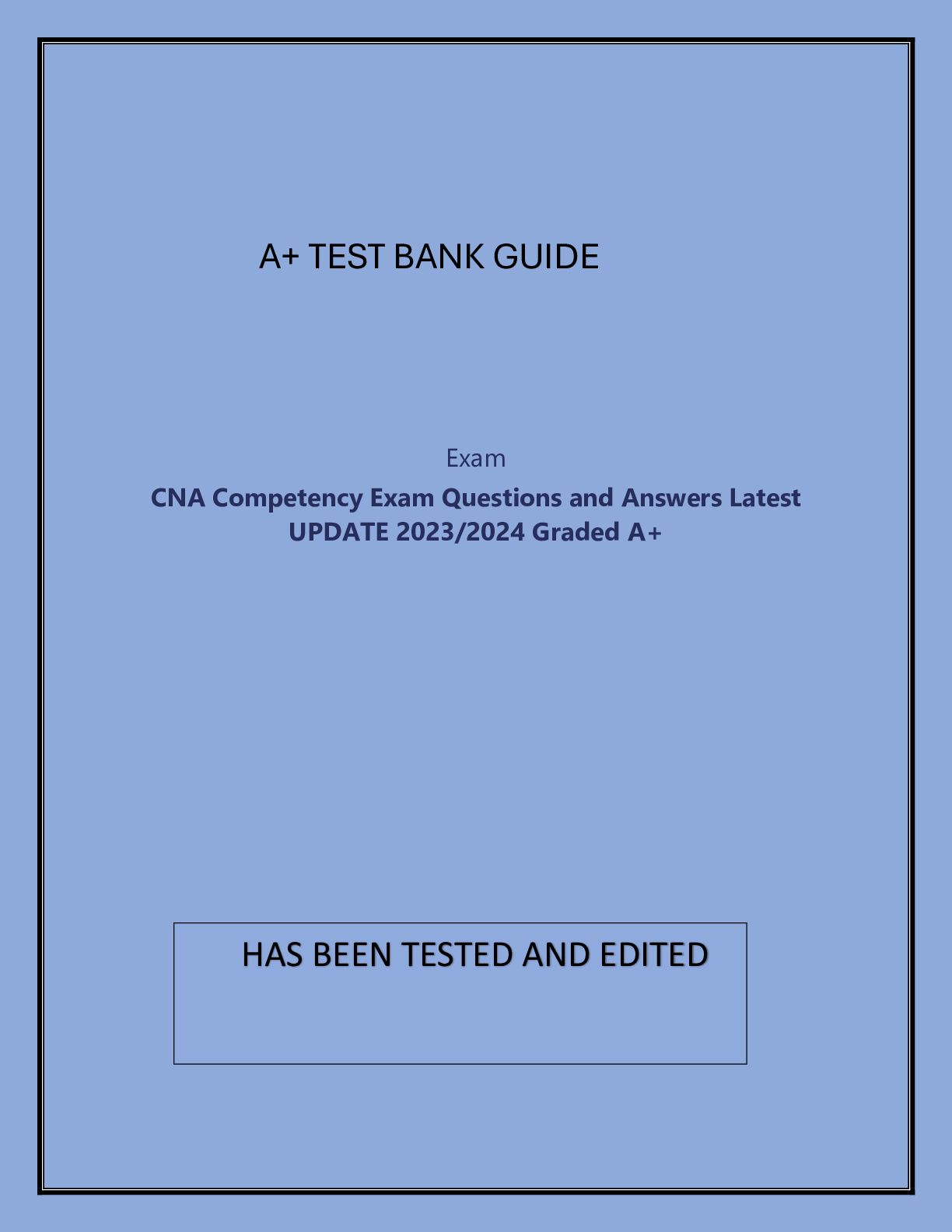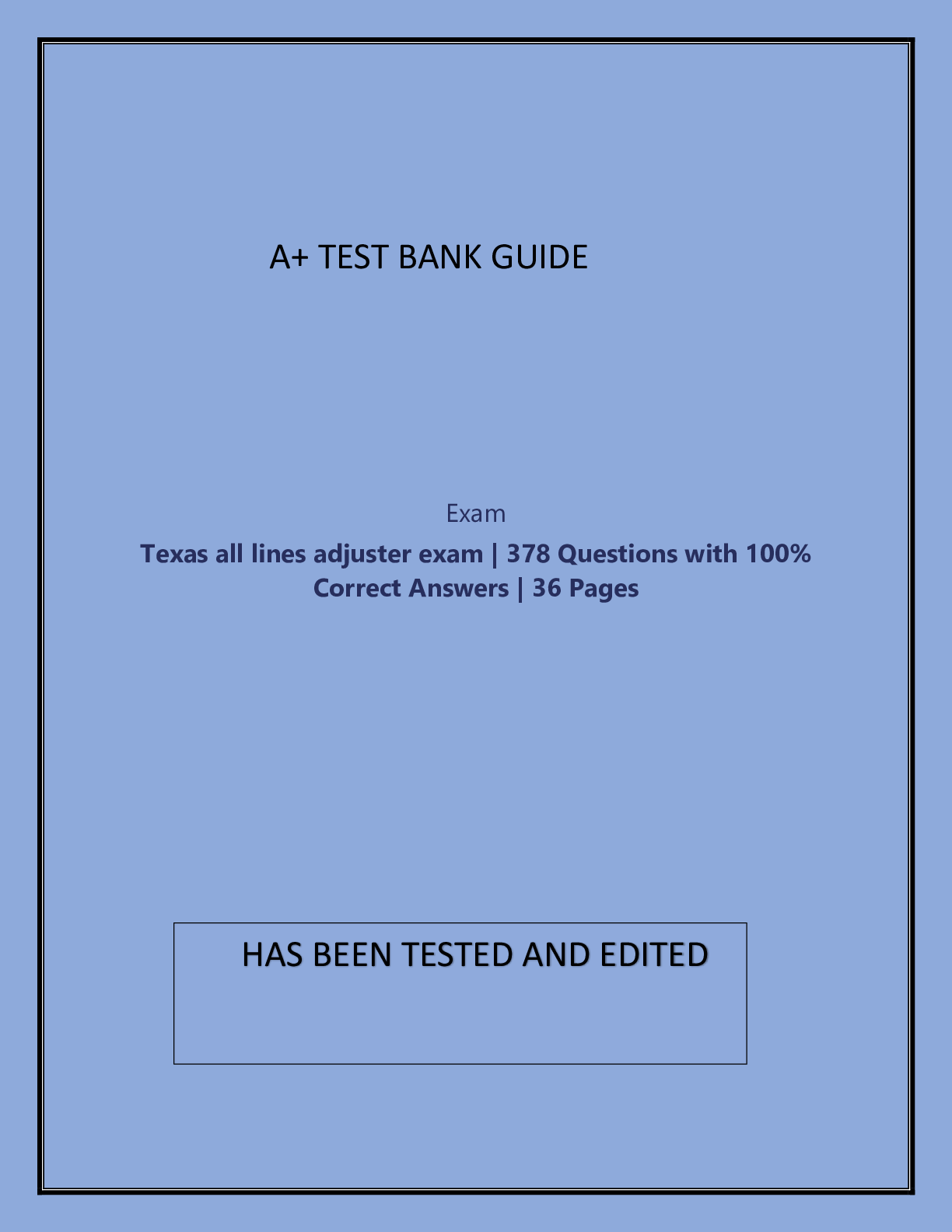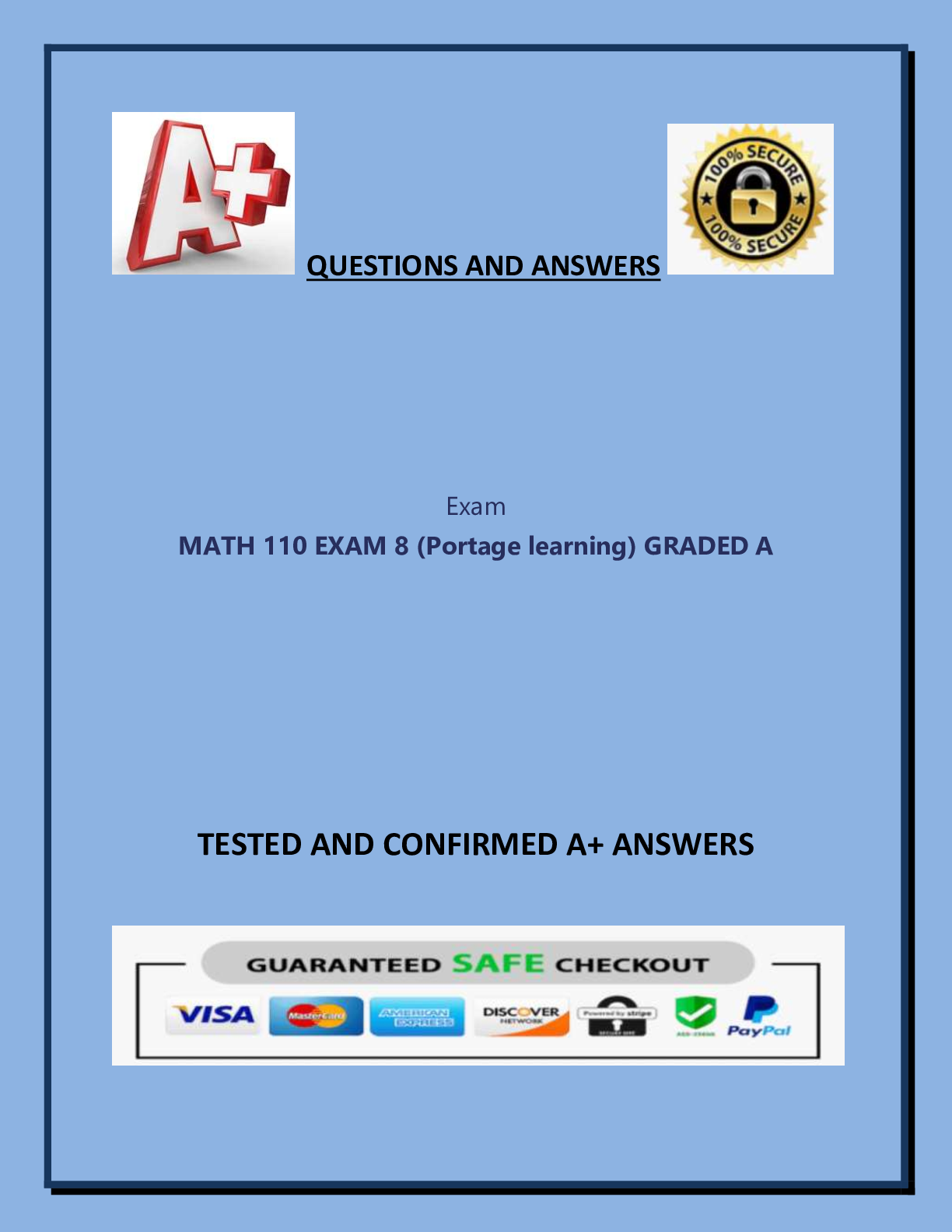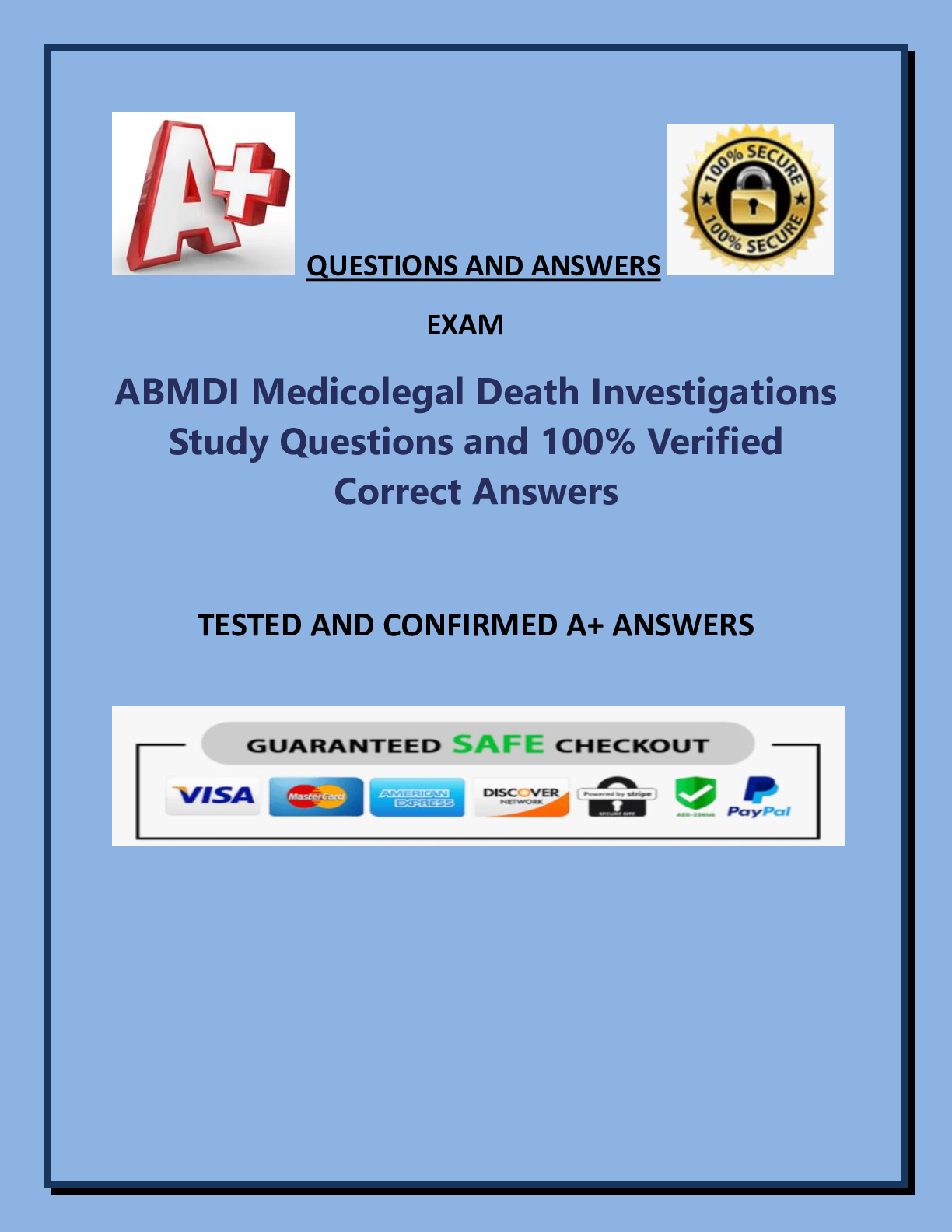*NURSING > A Level Question Paper > BURNS NCLEX QUESTIONS LATEST 2024 (All)
BURNS NCLEX QUESTIONS LATEST 2024
Document Content and Description Below
TESTED AND CONFIRMED A+ ANSWERS 1. The newly admitted client has burns on both legs. The burned areas appear white and leather-like. No blisters or bleeding are present, and the client states that ... he or she has little pain. How should this injury be categorized? A. Superficial B. Partial-thickness superficial C. Partial-thickness deep D. Full thickness 2. The newly admitted client has a large burned area on the right arm. The burned area appears red, has blisters, and is very painful. How should this injury be categorized? A. Superficial B. Partial-thickness superficial C. Partial-thickness deep D. Full thickness 3. The burned client newly arrived from an accident scene is prescribed to receive 4 mg of morphine sulfate by IV push. What is the most important reason to administer the opioid analgesic to this client by the intravenous route? A. The medication will be effective more quickly than if given intramuscularly. B. It is less likely to interfere with the client’s breathing and oxygenation. C. The danger of an overdose during fluid remobilization is reduced. D. The client delayed gastric emptying. If you need a professional to complete your college homework at a small fee, then reach out to amazingclasshelp.com 4. Which client factors should alert the nurse to potential increased complications with a burn injury? A. The client is a 26-year-old male. B. The client has had a burn injury in the past. C. The burned areas include the hands and perineum. D. The burn took place in an open field and ignited the client’s clothing. 5. The burned client is ordered to receive intravenous cimetidine, an H2 histamine blocking agent, during the emergent phase. When the client’s family asks why this drug is being given, what is the nurse’s best response? A. “To increase the urine output and prevent kidney damage.” B. “To stimulate intestinal movement and prevent abdominal bloating.” C. “To decrease hydrochloric acid production in the stomach and prevent ulcers.” D. “To inhibit loss of fluid from the circulatory system and prevent hypovolemic shock.” 6. At what point after a burn injury should the nurse be most alert for the complication of hypokalemia [Show More]
Last updated: 2 months ago
Preview 1 out of 30 pages
Instant download

Buy this document to get the full access instantly
Instant Download Access after purchase
Add to cartInstant download
Reviews( 0 )
Document information
Connected school, study & course
About the document
Uploaded On
Apr 10, 2024
Number of pages
30
Written in
Additional information
This document has been written for:
Uploaded
Apr 10, 2024
Downloads
0
Views
10

